#papunya
Explore tagged Tumblr posts
Text

Dingo Dreaming by Shorty Lungkarda
#aboriginal art#aboriginal dot painting#papunya#western desert#australian art#art#painting#abstract art#dots#circles#culture#aboriginal culture#art history
376 notes
·
View notes
Text

A decade through the lens of Guardian Australia photographer Mike Bowers
Murray Raggett from Papunya at the Indigenous-owned and run health service Purple House in Alice Springs in October 2019
#mike bowers#photographer#portrait#guardian australia#murray raggett#papunya#indigenous person#indigenous-owned and run health services purple house#australia#alice springs#culture
0 notes
Text

George Tjungurrayi
32 notes
·
View notes
Text

Papunya
Art Fight attack against @pandoranmama of their thylacoleo atop a dry sclerophyll hill!
#artists on tumblr#digital art#furry#thylacoleo#art fight#art fight 2024#draakart#2024#wanted to do so much more on this#but alas i got sick#it was fun painting the trees#i never paint trees#also i have no idea how to format the text of these art fight posts so that they look good
31 notes
·
View notes
Photo





Beautiful pottery by aboriginal artist Derek Jungarrayi Thompson (b 1976 in Papunya, language Pitjantjatjara, region - APY Lands.)
166 notes
·
View notes
Text

Aboriginal Artist Mick Namarari Tjapaltjarri was an early Papunya Western desert Artist
2 notes
·
View notes
Text
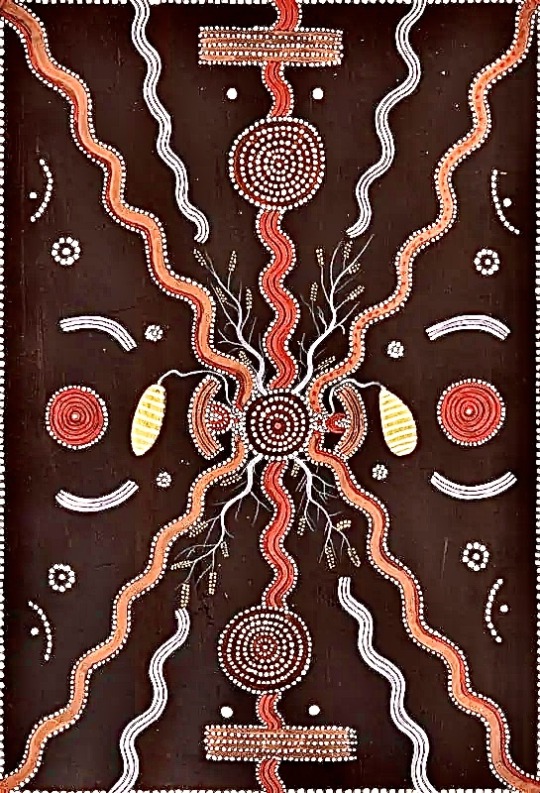
Painting by Kaapa Mbitjana Tjampitjinpa
Aboriginal artist of the Papunya Tula art movement, Central Australia.

Painting by Mick Wallankarri Tjakamarra
Aboriginal artist of the Western desert art movement, Central Australia.
Aboriginal art symbols and meaning
Aboriginal art meaning varies from area to area.
The symbols in Aboriginal art are design specific. Symbols have different meanings depending on which design is being painted.
A design made up of different symbols tells the story of a mythical ancestral heroe’s journey to their final resting place.
The individual symbols map out that mythical journey. The arranged symbols represent features of that ancestor journey. They also represent the place his spirit now resides.
The design as a whole also represents the spirit of a specific mythical ancestral hero called an Alcheringa.
Different Alcheringa spirits reside in different sacred sites. Each has its own specific design.
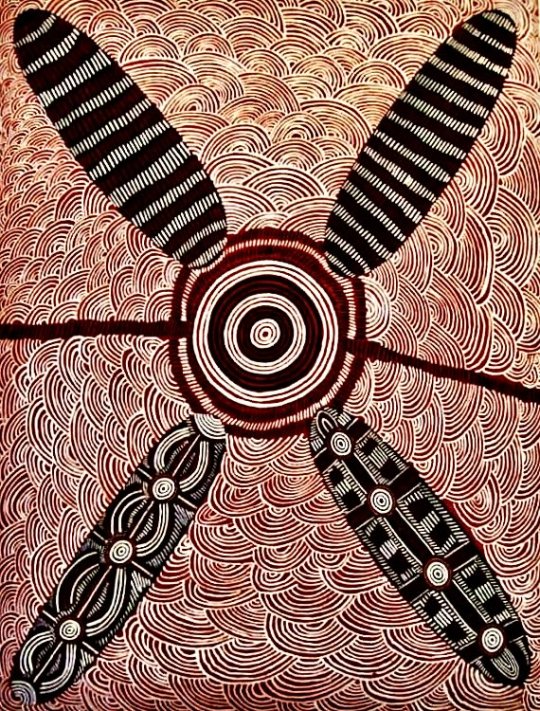
Painting by Anatjari Tjakamarra
Aboriginal artist of the Western desert art movement, Central Australia.
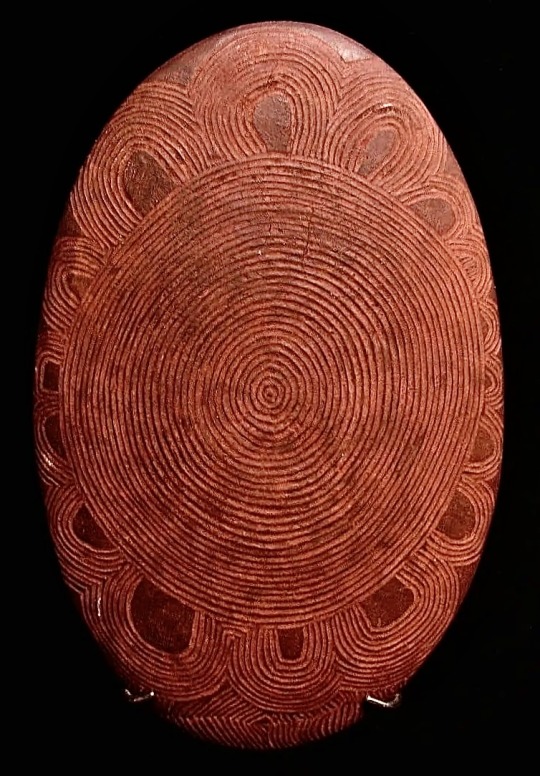
Wooden Churinga from Central Australia.
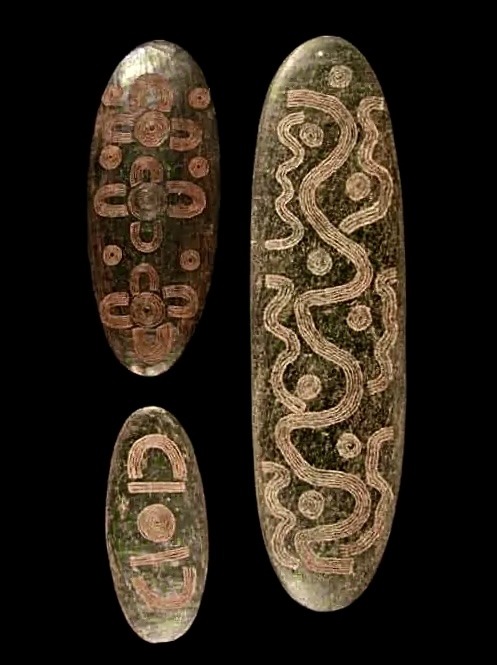
Stone Churinga from Central Australia.
Australian Aboriginal Churinga and Aboriginal art meaning
Sacred Churingas have the same designs as found in early paintings. These designs were not painted but incised into flat oval-shaped pieces of wood or stone. Churingas are not art they are sacred spiritual objects.
Traditional aboriginal art and early aboriginal paintings have a sacred design that depict Alcheringa (Dreamtime/Spirit).
Understanding Alcheringa and the designs found on sacred Churinga is the key to comprehending aboriginal art.
#Australian Aboriginal Churinga#Australian Aboriginal art#Churinga/Tjuringa/Djuringa#Aboriginal art meaning and Alcheringa
2 notes
·
View notes
Photo

Mural of Papunya Tula artist Michael Nelson Tjakamarra’s ‘Possum and Wallaby Dreaming’ at Parliament House, Canberra, Australia
5 notes
·
View notes
Text

Aboriginal Australian Artwork by Mick Namarari Tjapaltjarri
258 notes
·
View notes
Text
Co-directed by Rachael Maza and developed with founding member Sammy Butcher and his family, the new show celebrates a transformative, trail-blazing band.
One of Australia’s greatest rock bands was born in the Indigenous community of Papunya, a few hundred kilometres north-west of Alice Springs. Named for the honey-ant dreaming site and Country they loved, Warumpi Band toured the country and the world, and racked up a stack of successes: three studio albums (in 1983, they released the first rock song performed in Australian Aboriginal language), three Aria award nominations, and an entry in the National Film and Sound Archive’s Sounds of Australia collection.
0 notes
Text
Grandmother's Country by Gabriella Possum Nungurrayi
- Acrylic paint on linen 149 x 97 cm.
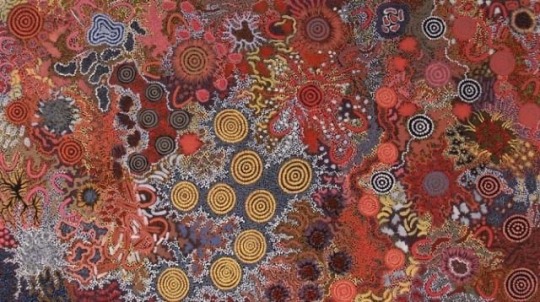
Gabriella was born in 1967 at Mt Allan, Northern Territory. She is the eldest daughter of Clifford Possum Tjapaltjarri, one of the most famous of our Australian Artists (deceased 2002). She began painting at an early age, under the tuition of her famous father and often collaborated with him, producing important works.
The content of Gabriella's paintings is the Dreaming stories handed down to her from her paternal grandmother, Long Rose Nungala and the other senior women who taught her in her formative years - these include Grandmother's Dreaming, Seven Sisters Dreaming (Milky Way), Goanna, Bush Tucker and Serpent Dreamings of her Anmatyerre heritage.
She was the youngest artist to be awarded the prestigious Alice Springs Art Prize whilst still studying at Yirara College at age 16. Her natural talent and knowledge of the women's dreaming stories was enhanced technically by her association with the grass roots painters of Papunya Tula - her father's brother Tim Leura Tjapaltjarri, Long Jack Phillipus, Johnny Warrankgula Tjupurula, and many others.
Gabriella resides in Melbourne with her family and travels extensively in her profession, as did her late father. Her Prizes, Collections and Exhibitions both within Australia and Internationally reflect the high standing in which the artist is held and the undeniable investment potential of her very beautiful artworks.
#Ancestors Alive!#Ancestors#What is Remembered Lives#Grandmother's Country#Gabriella Possum Nungurrayi#art#art and soul
1 note
·
View note
Text
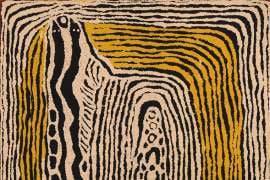
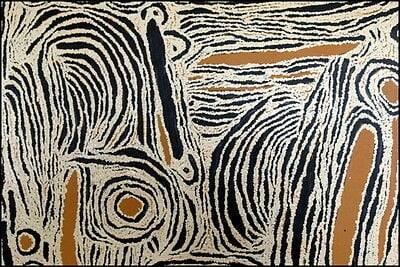
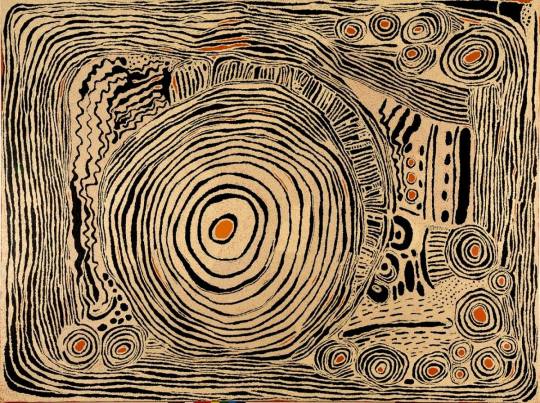
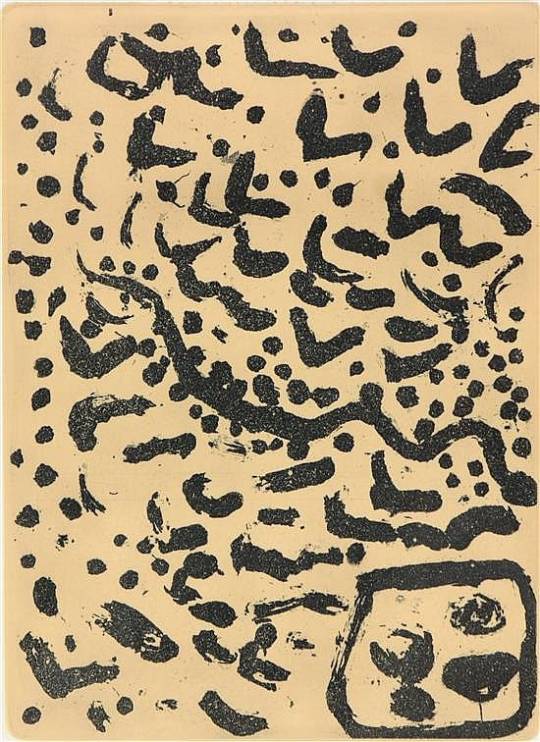
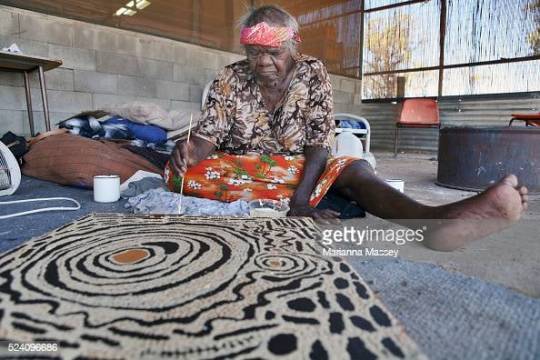
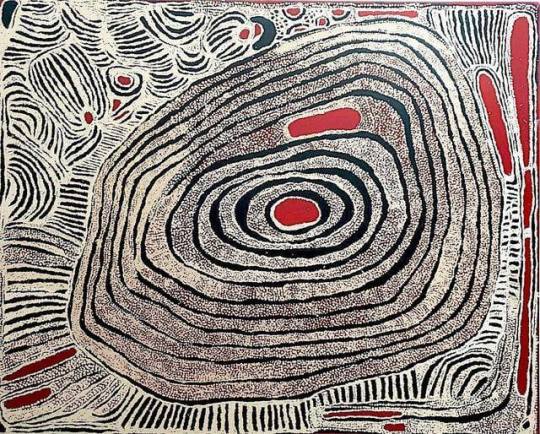
·
Shared with Public

Nyurapayia Nampitjijnpa (1935 - 2013) was one of the great characters of the Kintore region, instrumental in the development of the Haasts Bluff/Kintore Women's Painting Camp in 1994.
Nyruapayia Nampitjinpa (aka Mrs Bennett) painted her mother's Dreamings, which are connected to sites at Yumarra, Wantjunga and Tjalilli rockholes near Papunya, Pukara, Ngalkinginga and Munkara rockholes. The depictions of the sand-dune country and surrounding rocky outcrops bear a relationship to the designs used for body painting during the inma ceremonial dance. Deeply concerned with women's culture, her designs often depict women's ceremonies and rituals. The gathering of bush tucker such as kampurarrpa (desert raisin) and quandong are also central themes.
Mrs Bennett favoured strong contrasts, using blacks and pale yellows/creams set in relief against, often, a red ground. Her acclaimed work is included in the collections of the National Gallery of Australia, the Art Gallery of NSW, the Art Gallery of the Northern Territory, the National Gallery of Victoria, Artbank and in corporate and private collections internationally.
20 notes
·
View notes
Photo






Centennial, Bi-Centennial
1 commemorative postcard for...Federation Pavilion (1901)
A maas.museum ...construction of the Federation pavilion in Centennial Park. It was in there that the Commonwealth of Australia was inaugurated on January 1 1901. Designed by NSW Government Architect WL Vernon, the white marble-like pavilion had a dramatic impact upon those who witnessed the ceremony. The Sydney Morning Herald described its ‘pure whiteness and chaste beauty’ at length. The pavilion’s ‘simple purity and graceful elegance of outline, its exquisite modellings designed to symbolise the arts and crafts of the Commonwealth stood incomparably above all other inanimate displays of the day.’ (Sydney Morning Herald 02/01/1901) ...
Built only of fibrous plaster and wood, the pavilion was dismantled after 3 years. The frame was reputedly relocated in Cabarita Park but nothing of the original plaster-work is known to have survived. However as it was extensively photographed and filmed on the day of inauguration, the pavilion has remained the most instantly recognisable icon of Australia’s Federation.
2 Federation Pavilion (1985-87) architect: Alexander Tzannes (b.1950) Australian. Constructed for the 1988 bicentennial of European settlement, on the site of the 1901 Federation Pavilion.
READ tzannes.com.au/projects/federation-pavilion
inscription: MAMMON OR MILLENNIAL EDEN
3 - 4 lmants Tillers (b. 1950) Australia 1,440 vitreous enameled steel panels, interior of pavilion dome
The main artwork has a mix of European and Aboriginal elements. The dominant figure suggests many ideas in the one image - convict origins, heroic rural settler clearing the land, and many others. It is taken from the work of German painter George Baselitz, hence the initials 'GB' at the base of the figure.
Beside the figure is a contrasting image taken from the mural designed for the forecourt of Parliament House by Aboriginal artist Michael Tjakamarra. The colours reflect those of the Australian outback and the symbols are commonly used in Aboriginal art. The target-like circular patterns represents a shield, 'dE' represents animals, the 'E' people and the wavy lines represent the movement of people and places from one place to another. Tjakamarra's design is repeated beside the dominant artwork but is very faint and merges into the adjoining white pan. centennialparklands.com.au
5 Michael Nelson Jagamara (b.1945) Luritja/Warlpiri peoples, Australia. Possum and Wallaby Dreaming (1986-87) (Forecourt Mosaic Pavement), Parliament House, Canberra.
Fabricated by William McIntosh, Aldo Rossi and Franco Colussi, Over 90,000 granite pieces in cement, 196 square metres. © The artist, licensed by Aboriginal Artists’ Agency Ltd.
The mosaic is a contemporary interpretation of the sand-painting tradition of the Warlpiri people, and has complex layers of meaning known only to Warlpiri elders.
The mosaic symbolises the deep spiritual relationship between Aboriginal and Torres Strait Islander peoples and their ancestral land.
Jagamara is a Warlpiri Elder from Papunya, west of Alice Springs. He is one of the foremost proponents of Western Desert painting, one of the first contemporary Indigenous art movements. aph.gov.au
6 Michael Nelson Jagamara (b.1945) Luritja/Warlpiri peoples, Australia. Michael Nelson Jagamara (born 1945) Luritja/Warlpiri peoples, Possum and Wallaby Dreaming (1985), synthetic polymer paint on canvas, Parliament House Art Collection, Canberra. © The artist, licensed by Aboriginal Artists’ Agency Ltd.
Possum and Wallaby Dreaming...describes a gathering of a large group of people from the kangaroo, wallaby and goanna ancestors. The groups are meeting to talk and to enact ceremonial obligations. aph.gov.au
#centennial park#pavilion#post modern frame#architecture#structural frame#tzannes#appropriation#tillers#tjakamarra#jagamarra#parliament house#mosaic#baselitz#site specific
1 note
·
View note
Text
Peinture contemporaine aborigène
Musée du Quai Branly, Paris.
Tjunkiya Napaltjarri (1930- )
Australie, Territoire du Nord Papunya (2003)

#museum#paris#paint#peinture#aboriginal#australia#quaibranly#artcontemporary#papunya#tjunkiyanapaltjarri#art
0 notes
Photo

Traumzeit Tjukurrpa
Kunst der Aborigines der Western Desert. The Donald Kahn Collection
Jo-Anne Birnie Danzker
Prestel Verlag, München 1994, 151 Seiten mit zahlreichen Abbildungen, ISBN 9783791314020
euro 25,00
email if you want to buy :[email protected]
Dieses Buch wurde veröffentlicht anlässlich der Ausstellung gleichen Titels im Museum Villa Stuck, München, vom 26. Juli bis zum 16. Oktober 1994
The early Papunya works were almost entirely Tjukurrpa (Dreaming) paintings which documented creative acts of ancestral beings which wandered the landscape. The early Papunya paintings were essentially a translation of a traditional form to a new medium. Since their humble beginnings at Papunya, the acrylic painting movement has expanded through the Western Desert and has undergone a series of shifts. Western Desert art has often been seen as primarily abstract in its use of symbols as the dominant motif, but there has always been a figurative element. The early Papunya paintings for example were seen in some circles as being too explicit in their reproduction of actual ceremonial objects and scenes. The use of less figurative works has been linked to attempts on the part of the artists to mask the sensitive and dangerous aspects of their work.
27/04/20
orders to: [email protected]
ordini a: [email protected]
twitter:@fashionbooksmi
instagram: fashionbooksmilano, designbooksmilano tumblr: fashionbooksmilano, designbooksmilano
#dreamtime#Tjukurrpa#Papunya#australian aboriginal art#Western Desert#aborigeni australiani#fashion inspirations#fashionbooksmilano
0 notes
